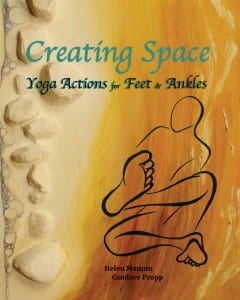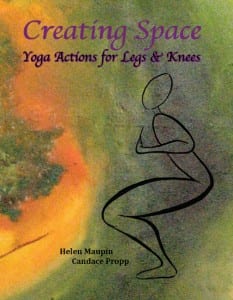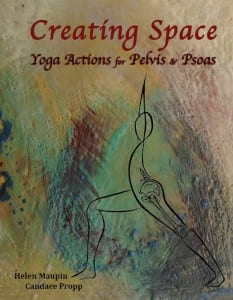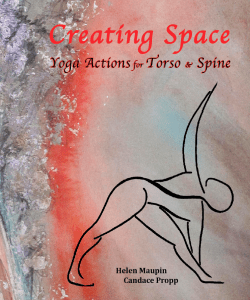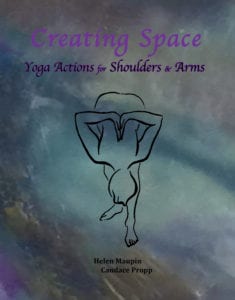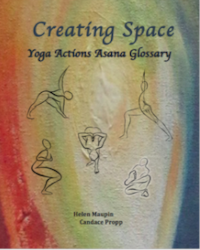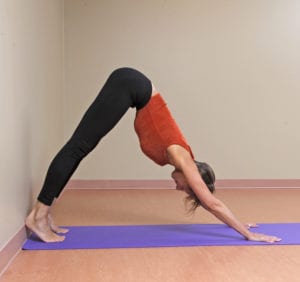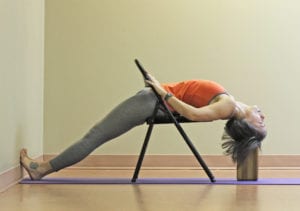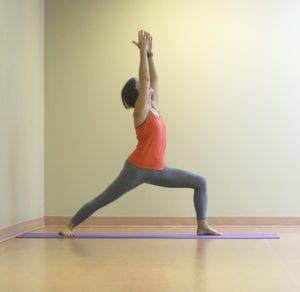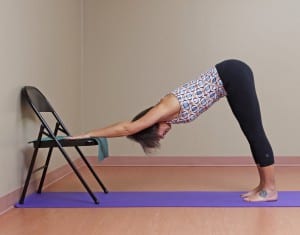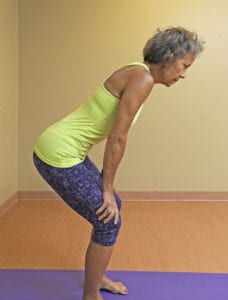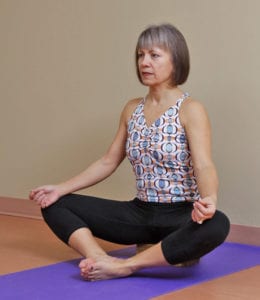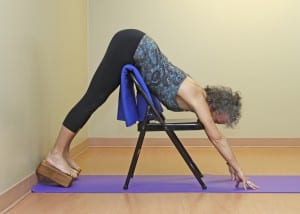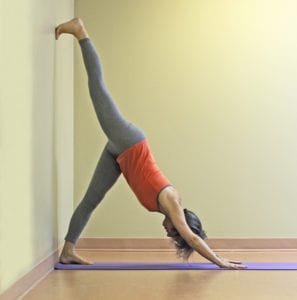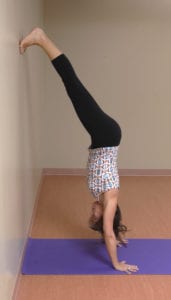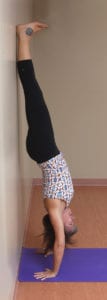Book Series: Creating Space Yoga Actions
Not everyone can do yoga poses. Everyone can do Yoga Actions.
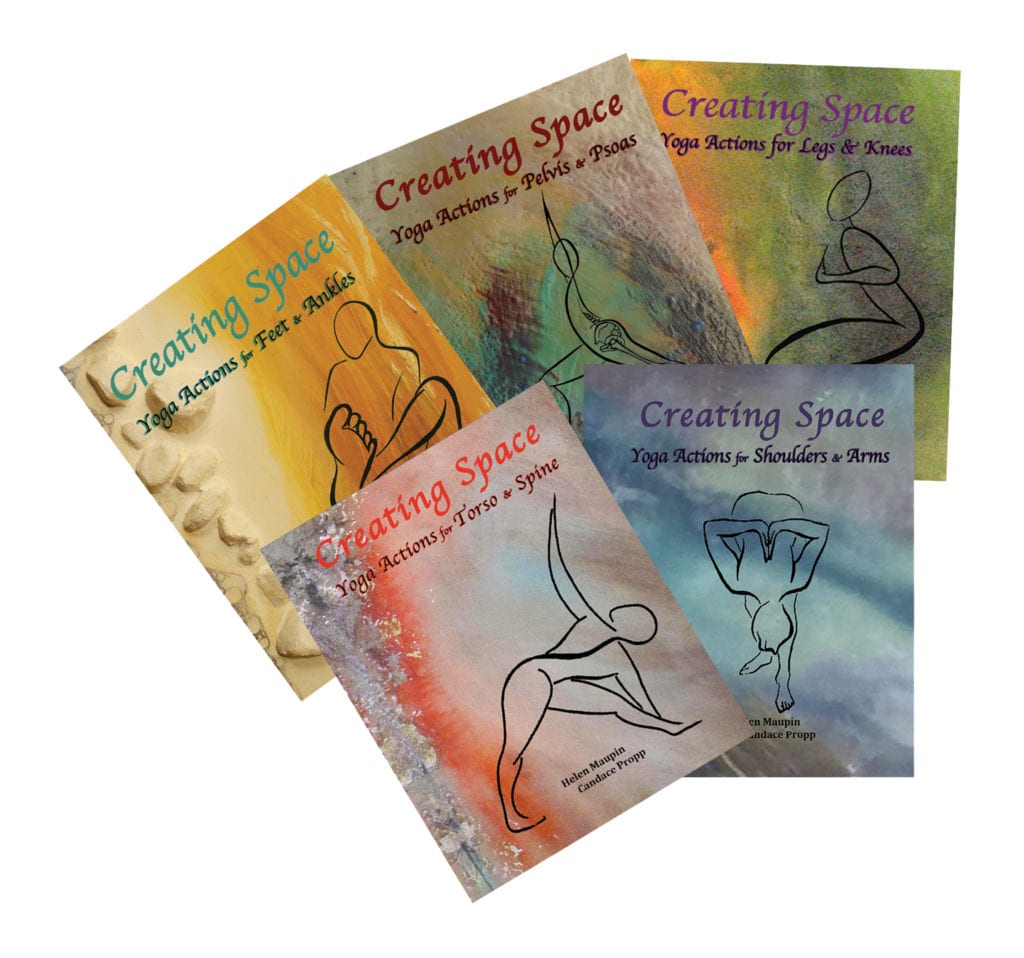
People come to yoga after hearing friends and family tell wonderful healing stories as a result of its practice. These outcomes are indeed true as yoga does offer many healthy benefits. However, there is much more to the practice of yoga than learning a series of poses (asanas) and expecting their physical benefits will naturally follow.
Yoga is a whole-being, spiritual practice with only one of its eight paths — asana — focusing specifically on the physical body.
Often, the yoga teacher’s challenge is practitioners see doing asana poses “correctly” as the endgame. That is, … “if I can do Adho Mukha Svanasana (downward-facing dog) like my teacher, I will have accomplished my goal.”
There are two problems with this approach to yoga. Firstly, yoga is not about achieving goals nor is it about teaching how to do poses accurately or as depicted in some photo on a Yoga website. Each of our bodies is different so how you express Adho Mukha Svanasana (AMS) is going to be right for your body (in the moment) and quite different from my expression.
ADHO MUKHA SVANASANA (Downward-facing Dog)
No matter whether you are a beginner, intermediate, or advanced practitioner, thus, regardless of your practice’s sophistication, your physical and energetic uniqueness will imprint the pose. This is as it needs to be.
Occupying the pose is not the endgame. There is no end game. There is the ever changing nature of your body, and your ability to use your body’s intelligence along with yoga actions to bring forth calm, clarity and truth.
Secondly, when we only focus on doing the poses correctly, we develop a goal-oriented experience, which, in yoga, we call an exercise program. However, asana becomes an integral part of a spiritual practice when we understand that the real purpose of doing the poses is to reveal where imbalance exists in the body and mind so we can then align both with spirit.
Your awareness of sensations—tightness, numbness, heat, even pain—that emerge during your asana practice reveals to you where these imbalances are located in your body. For instance, when you do AMS (down dog), do you find a great deal of sensation in your shoulders, hamstrings and calves? Are you unable to bring your heels to the mat? The imbalance being revealed here is tightness in your arms, torso and legs. This tightness does not allow you to balance your body’s weight equally between your hands and feet. Instead, you dump most of your weight onto your shoulders and wrists.
To enable your current best expression of AMS or any pose, we want to first establish a solid foundation. The foundation of any pose are those parts of the body that touch the earth. In AMS, eight parts of your body are meant to touch the earth—the inner and outer edges of both hands and both feet. When first taking the pose, most people press into the outside edges of their hands and their heels do not reach the mat. These ways of doing the pose reflect their imbalance or lack of grounding.
So, how can you ease the imbalance you experience in AMS? By resting your heels into a wall and using a yoga action, such as find the four corners of your hands and feet (thumb and baby finger mounds, inner and outer heel of palm mounds; big and baby toe mounds, inner and outer heel mounds). Any of these six variations of AMS illustrated below help you to better distribute your weight so you can ground the pose through the yoga action.
Now that the pose is grounded, you can begin to balance your weight evenly between your hands and your feet. This yoga action requires you to focus your mind and use mental and physical energy to shift your inner body weight into a more balanced state.
ADHO MUKHA VRKSASANA (Handstand)
By first grounding a yoga pose, as practiced above, you can move deeper into where the source of your imbalance is located. Once you discover its location, you are more able to begin creating stability and/or openness based on your unique needs. For instance, a person who has tight, strong muscles likely needs space in terms of longer muscles or expanded joints whereas a person who is more naturally flexible likely needs muscular strength and skeletal alignment. Same pose, but different yoga actions (treatments) for different bodies and conditions.
When you consider the hundreds of yoga poses (asanas), not everyone can do all these poses. If you are one of those people that cannot, which is likely 90% of the yoga population, how can you accrue the healthy benefits? By using yoga actions as your way of practising a modified variation of each pose. As an example, the inversion—Adho Mukha Vrksasana (handstand)—can be supported in such a way that a yoga action that enables AMV’s benefits can still be practiced.
Fortunately, everyone can do all the yoga actions we teach. The process looks like this. First, you take the pose to the best of your abilities. Second, you bring your awareness inside to where sensation is confronting you in the pose. Third, you apply a yoga action to ease the tension, tightness, numbness or other forms of instability and imbalance you are sensing. Fourth, you watch the impact of the yoga action on your inner experience. As you witness the yoga action’s impact, you discover it creates a more effortless or balanced inner experience of the pose.
This same process can be applied to all physical imbalances in our body including old injuries such as sprained ankles. Often no rehabilitation of the ankle occurs after the sprain heals, and what remains is misalignment and weakness in the ankle joint—pronation or supination of the ankle. A yoga action such as lengthen down the inner ankle into the inner heel and down the outer ankle into the outer heel while maintaining the lift of the inner arch will enable you to discover where your imbalance or blockage is manifesting in your ankle. Fortunately, engaging the yoga action impacts that imbalance where you need it most.
View more in
Yoga Actions for Hands & Feet
It is worth repeating that doing a yoga pose in order to have its external representation look “correct” interferes with your ability to feel where sensation is signalling imbalance. Letting go of your agenda for the pose is very much about the practice of yoga. Without releasing your wants and desires and surrendering to what is actually occurring in yoga as well as in your daily life off the mat, your practice cannot deepen beyond the physical body into the energetic, mental, emotional and intuitive being that you are. INSERT KOSHA IMAGE HERE
Yoga actions take you into these deeper layers to not only still the body of pain, but silence the mind from incessant chattering. The deeper you penetrate your inner experience, the closer you move to the source of your imbalances, the more you are able to reduce your struggle and suffering, and the more you express your true self. Incorporating yoga actions into your asana experience enhances sensory withdrawal (Pratyahara) and concentration on a single focus (Dharana), both of which establish the capacity to be mindful. In essence, mindfulness is the ability to be present in the moment on purpose. Present moment awareness liberates our intuitive and joy bodies (see image above). In concert, Asana, Pratyahara and Dharana create the conditions in the body and mind that are necessary for meditation (Dhyana), which takes us even deeper into our intuitive and joy-filled layers of being.
Yoga Actions is a five-volume series of e-books emphasizing primary actions for such areas in our bodies as — Legs and Knees, Pelvis and Psoas (Hips and Groins), Spine and Rib Cage, Arms and Shoulders. Within every volume, each action is displayed in a two-page layout with the first page describing the action and visually demonstrating the experience through a Pre Pose and a five-pose Peak sequence to further expand your experience. Finally, we follow each sequence with Plus Poses to further develop the action and Post Poses to fully relax the body and integrate the asana experience.
book grid bottom

